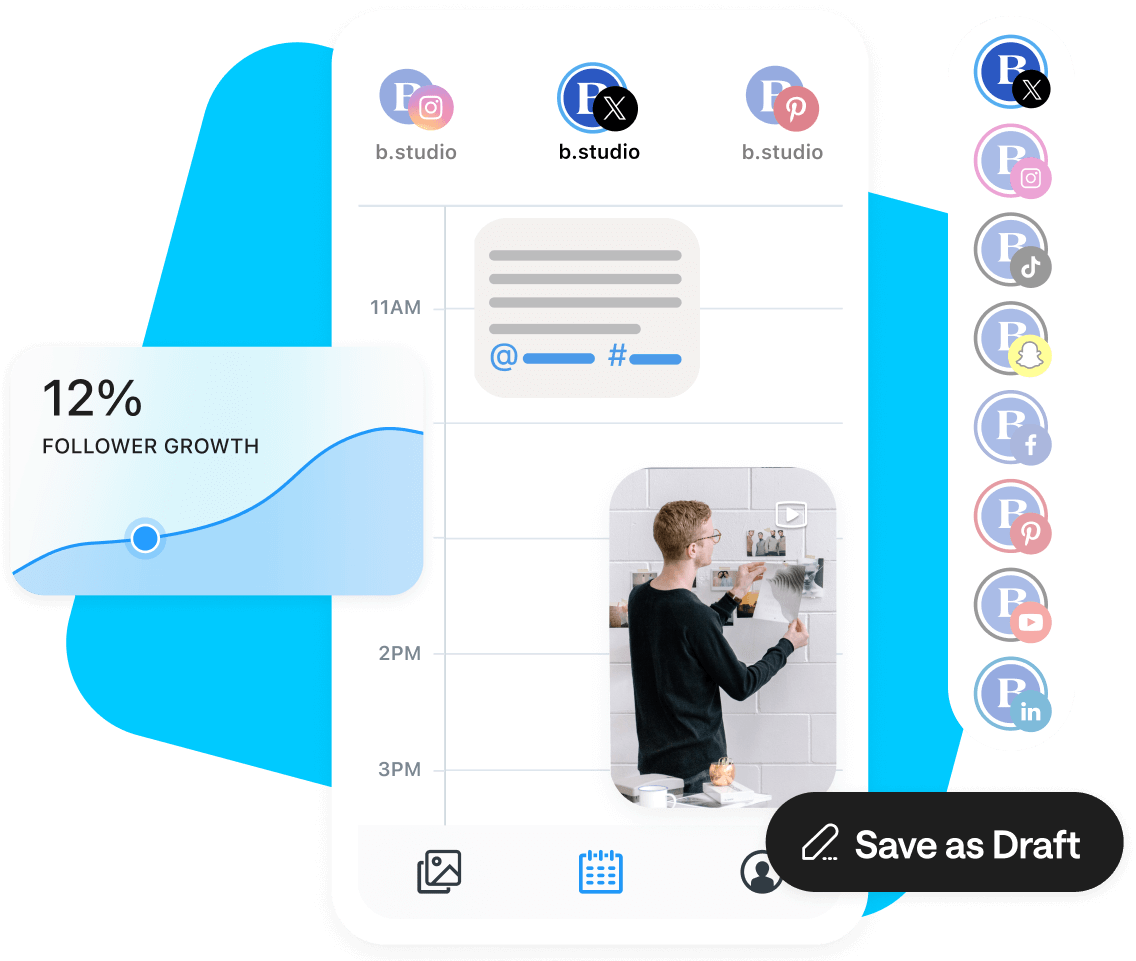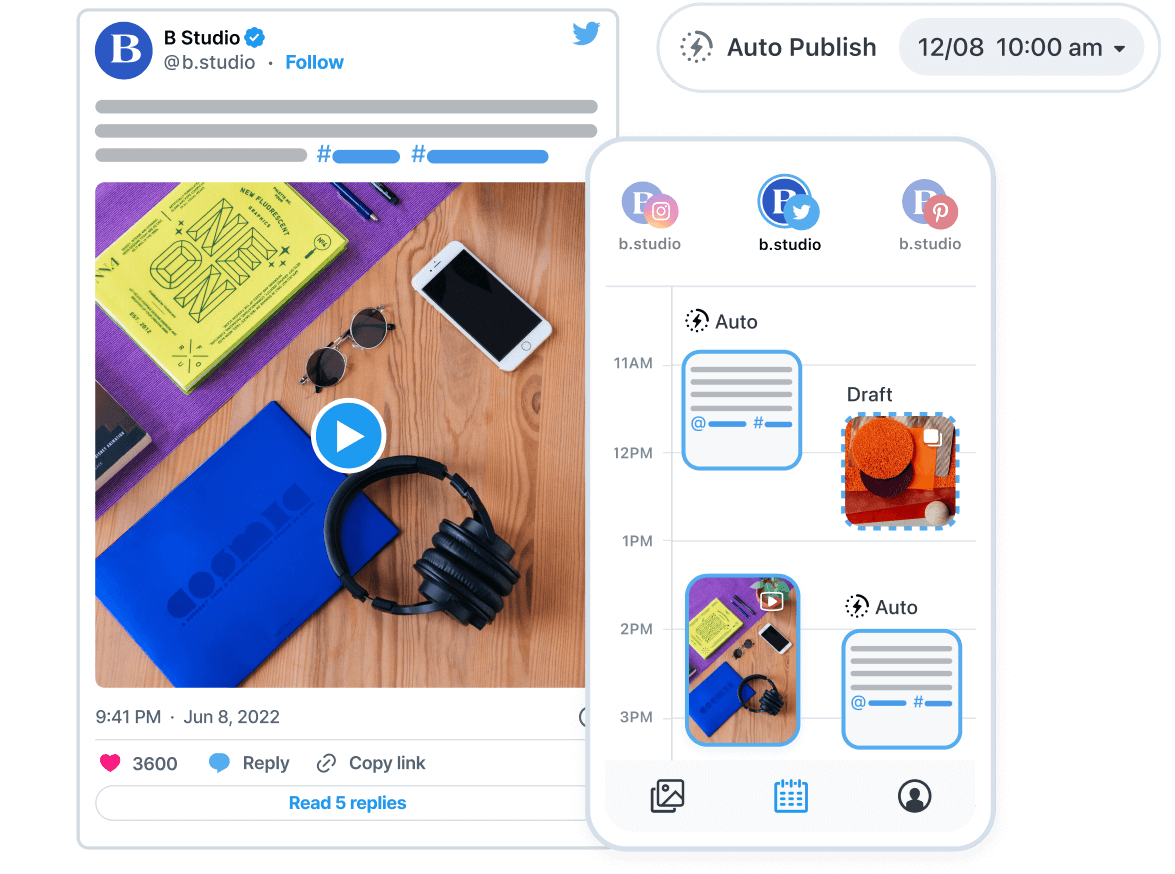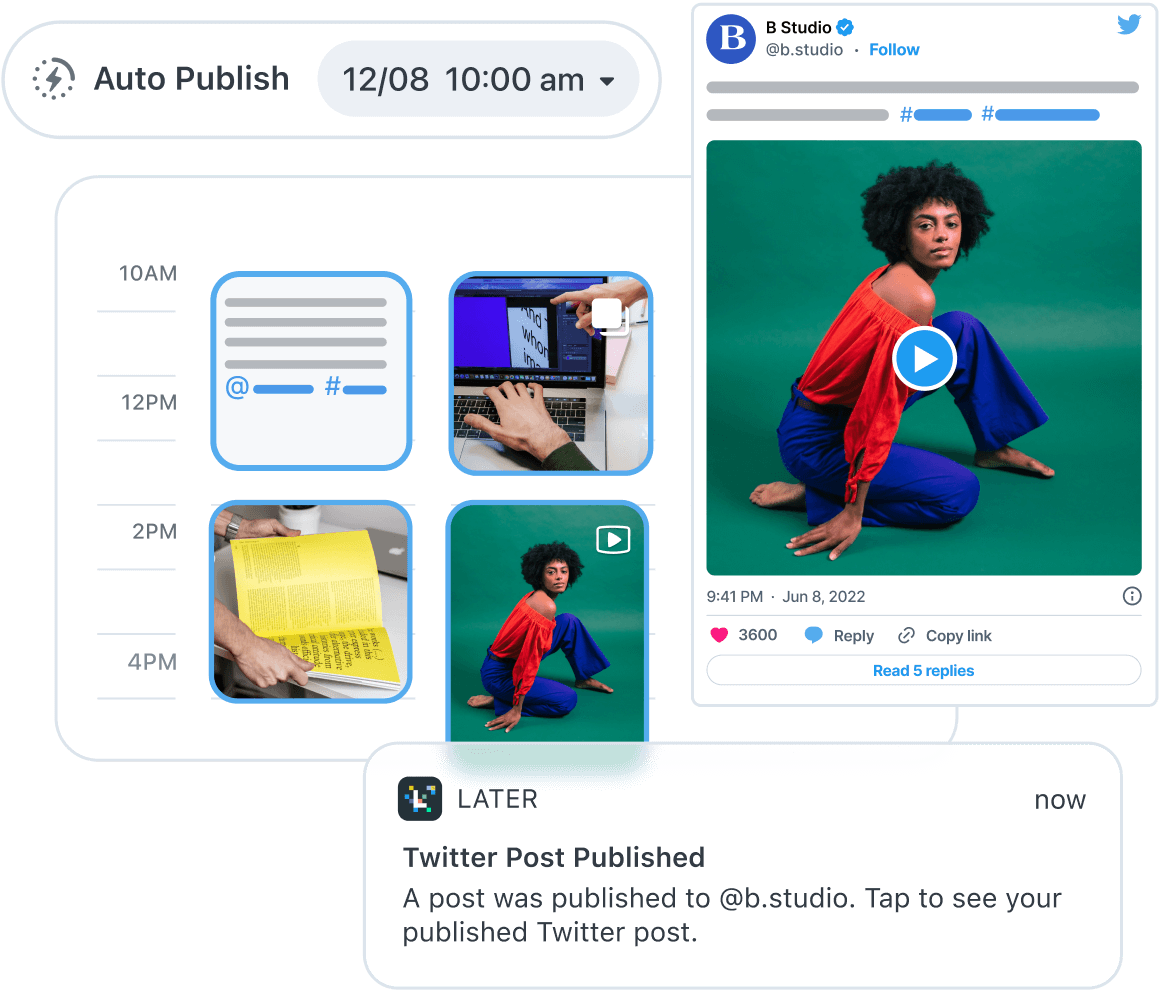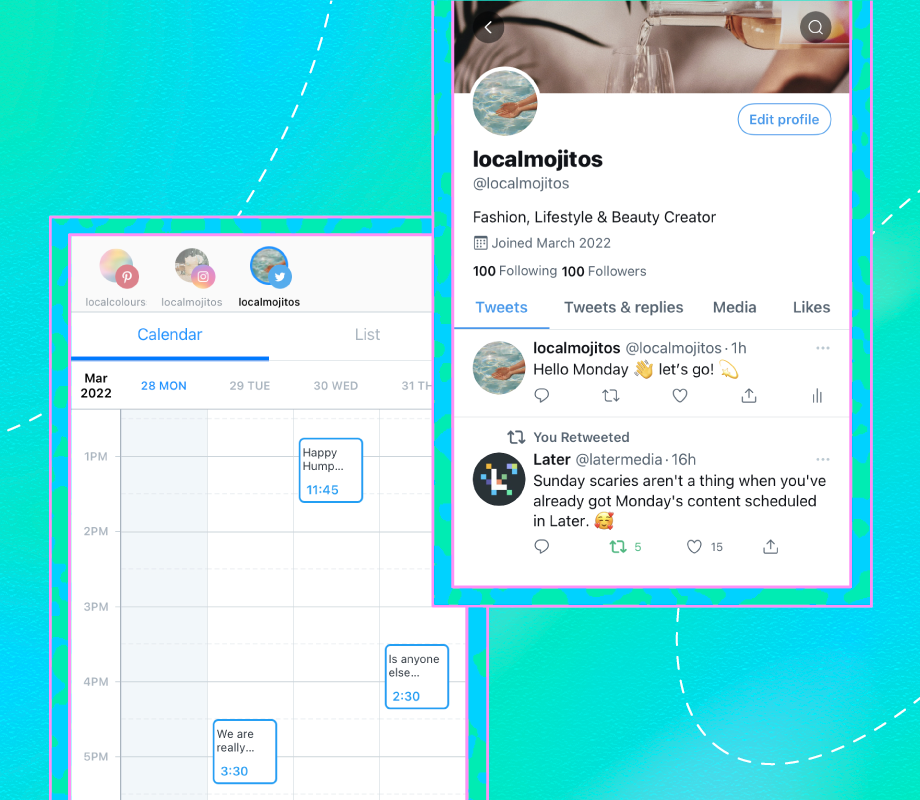Tweet, Tweet, Repeat
Scheduling tweets made easy with Later for X
Create, edit, and schedule posts on X (Twitter) in seconds with Later.


Start the conversation with Later’s X (Twitter) scheduler
Post it whenever, wherever.
Streamline your workflow
Schedule all your social content in advance (at the same time!).
Tweet more, stress less
Draft when inspiration hits, then schedule on desktop or on Later’s mobile app.
Get the data that matters
Monitor trends in your overall performance & see which posts are driving engagement.
How to Schedule Twitter Posts with Later
Post. Grow. Repeat.
Get started in a snap. Just connect your profile, schedule content, & go live exactly when you want.

- 1.
Publish automatically from anywhere
Later’s Auto Publish tool lets you schedule posts on X (Twitter) ahead of time, whether you’re at your desk or away from it.
- 2.
Plan, draft, tweet
Draft and save your tweets, then perfect them & schedule them later.
- 3.
Tag while you schedule
Connect with specific people & increase your reach by tagging other users in your tweets while scheduling.
- 5.
Get the data you need
Use Later Analytics for Twitter to find easy ways to boost your reach, followers, & engagement.
LATER’S X SCHEDULING FEATURES
Tweeting just got better, faster, & easier
Create, manage, and optimize posts in seconds.

MOBILE SCHEDULING
Save time & schedule your Tweets
Set it and forget it. Schedule all of your X posts at the same time as the rest of your social content. Available on desktop and the Later mobile app.

Schedule It All
From text posts to video
Plan and automatically publish any kind of post to show off your brand, including videos, images, text-only, and multi-photo posts.

URL Shortener
Say more with fewer characters
Say what matters to you (or your followers). Later’s URL shortener helps make the most of your character count, without wasting space on lengthy links.

X (Twitter) Analytics
Measure what matters
Later’s X Analytics features let you monitor trends in your overall performance, like weekly and monthly growth, click tracking, and which posts are driving the most engagement.
Customer Testimonial
Why our customers love Later

“Later has enabled our team to focus on producing quality, engaging content by freeing up time that would have been spent on collecting user-generated assets, planning, and scheduling.”
MeUndies
@meundies
Supercharge your social media results
Learn how to get better ROI from your social media content & campaigns with Later’s helpful (free!) resources.
Blogs
![]()
How to Schedule Tweets on Twitter
Blog Post
![]()
How to Use Twitter for Business
Blog Post
![How to Make Money on Twitter]()
How to Make Money on Twitter
Blog Post
Resources
Free Social Media Reporting Template
Download our free template to create your next monthly social media report and start showcasing your results.
Read MoreMake Sales on Social
Learn how to convert your social content goodness into commerce. Hint: it's all about getting P.A.I.D.
Read MoreFree Community Guidelines Template
Get our free Community Guidelines Template to build an engaged online community and grow your business.
Read MoreFree Social Media Content Calendar Template
Stay organized and meet your marketing goals with our free Social Media Content Calendar Template.
Read More
Get more growth with Later’s X Scheduler
Try any Later plan free for 14 days.


